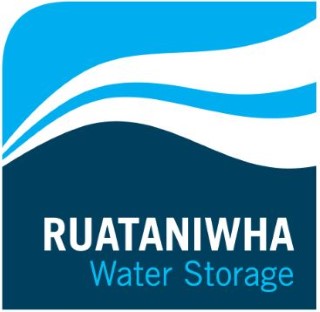
Current filter:

A councillor-initiated review of the Ruataniwha Water Storage Scheme will be presented at a special meeting of Hawke’s Bay Regional Council tomorrow.
The Council commissioned a review of the legal, financial, economic, engineering and environmental elements of the scheme, including the impacts and consequences of implementing the Tukituki Plan - also known as Plan Change 6 - with and without the Scheme, as well as the implications of withdrawing from the Scheme.
Overall, the review concludes that the risks associated with the scheme have been extensively assessed and that the Council can have confidence in these risks having been identified and, where possible, quantified and mitigated. Despite this, there are significant risks that remain with both the scheme proceeding and not proceeding.
Based on the review, it is now up to the Council to decide if they are comfortable with the overall level of risk in either direction, and make a final decision on whether the Scheme should proceed, be abandoned or shelved.
Ruataniwha Water Storage Scheme Review Report May 2017
Review Report May 2017 - Executive Summary and Key Conclusions
Legal
The review confirms the Council’s right to withdraw from the Ruataniwha Scheme. This will likely require a formal public consultation process to occur before reaching a final decision. Should the council choose to proceed with the scheme it does not need to consult again with the community.
Engineering
The review includes consideration of alternative dam sites and on-farm storage but finds these to be considerably more expensive on a case-by-case ‘volumetric’ basis. It finds the Ruataniwha Scheme to be the most cost-effective and efficient method of storing water for Central Hawke’s Bay irrigation at scale. Seismic risk, gravel management and the reliability of river inflows have been reviewed, and found to be adequately assessed and appropriately managed.
Economic
The review states there is a higher level of uncertainty around the Ruataniwha Scheme economics, mainly due to the fact it is not possible to predict future land use. However, it is concluded that Ruataniwha Scheme water is affordable for a range of land uses. The scheme is forecast to deliver between $130 million and $380 million in annual regional Gross Domestic Product and between 1130 and 3850 new jobs, depending on more positive or more pessimistic assumptions.
If the scheme does not proceed high environmental flow requirements in the Tukituki Plan will reduce pre-tax farm earnings by $900,000 on average and over $4 million in very dry years.
Financial
The Review concludes that financial arrangements relating to the construction and operation of the Scheme have been thoroughly scrutinised and present a relatively low risk to the Council, and that the Council can have confidence that the risk of financial failure of the Scheme is very low.
The review also finds a high level of uncertainty in the timing and quantum of financial returns to Council’s Investment Company HBRIC Ltd, depending on how quickly water is taken up by farmers. The returns are forecast - even in more pessimistic scenarios - to be acceptable over the longer-term for an infrastructure investment. The review states the Council must decide whether the rates of return on its capital are acceptable in light of its broader, strategic economic and environmental objectives.
Environmental
The review finds the greatest risk and uncertainty for the Council is the environmental management challenges for water quality, out of land use in the Tukituki Catchment. It says substantial environmental risks and uncertainty exist for the Council in the catchment with or without the Ruataniwha Scheme.
The review highlights that meeting the Nitrogen (Dissolved Inorganic Nitrogen or DIN) limits in all Tukituki sub-catchments by 2030 (as required by the Tukituki Plan) is highly improbable and may even be physically impossible. The Review has identified that the current Tukituki plan has a number of serious deficiencies which mean that the Plan will struggle to deliver lower nitrogen levels with or without the scheme.
Land use on the Ruataniwha Plains is already dominated by intensive livestock production and the review concludes that the scheme will need to facilitate land use away from this to lower forms of nitrogen leaching, such as arable farming and horticulture, such as apple and grape production.
It says the Ruataniwha Scheme provides a framework with stronger controls on farms, more flexibility and economic upside, as well as improving river flows in dry summer conditions; however, it is not possible to rule out scheme-enabled irrigation making the current nitrogen management challenge worse if it cannot transition land use effectively.
The review says the Council needs to decide which set of risks it prefers, and which set of levers offer the best prospects of achieving the objectives of the Tukituki Plan Change.
What next?
The Council will formally receive the review report tomorrow. It will then seek further advice on options for responding to the review at a subsequent Council committee meeting.
A formal decision on the future of the scheme is expected to be made at the Council meeting on 31 May.
10 May 2017
Disclaimers and Copyright
While every endeavour has been taken by the Hawke's Bay Regional Council to ensure that the information on this website is
accurate and up to date, Hawke's Bay Regional Council shall not be liable for any loss suffered through the use, directly or indirectly, of information on this website. Information contained has been assembled in good faith.
Some of the information available in this site is from the New Zealand Public domain and supplied by relevant
government agencies. Hawke's Bay Regional Council cannot accept any liability for its accuracy or content.
Portions of the information and material on this site, including data, pages, documents, online
graphics and images are protected by copyright, unless specifically notified to the contrary. Externally sourced
information or material is copyright to the respective provider.
© Hawke's Bay Regional Council - www.hbrc.govt.nz / +64 6 835 9200 / info@hbrc.govt.nz